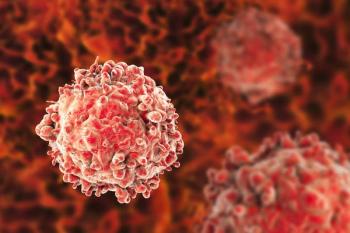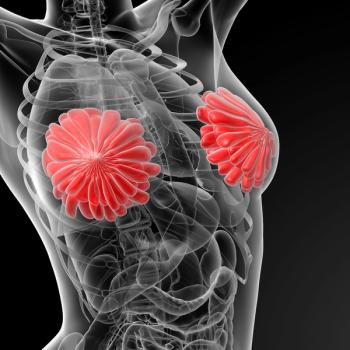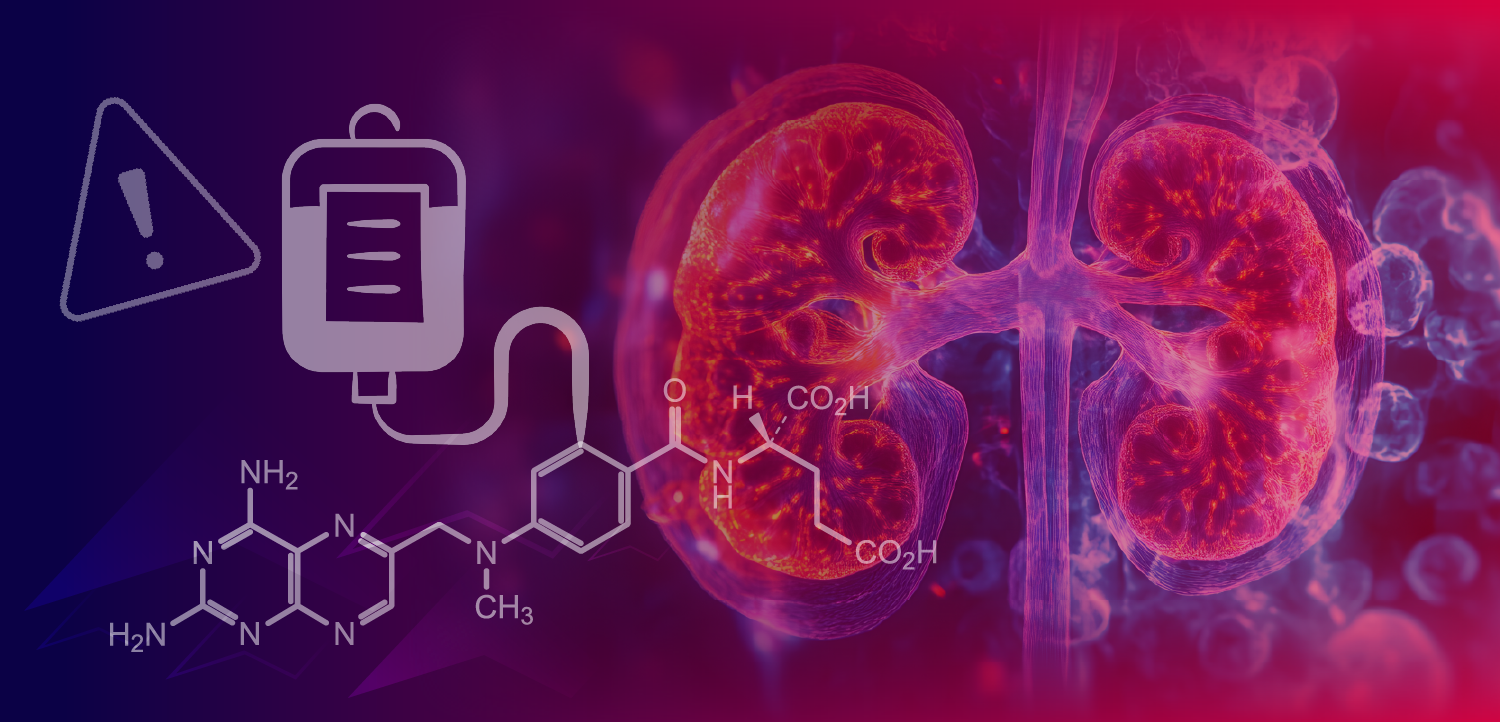
Trastuzumab Deruxtecan Yields Promising Clinical Benefit in HER2-Positive Metastatic Breast Cancer
Patients with HER2-positive breast cancer who were treated with trastuzumab deruxtecan experienced favorable activity and reduction or loss of HER2 expression.
Fam-trastuzumab deruxtecan-nxki (Enhertu; T-DXd) as a treatment for HER2-positive metastatic breast cancer yielded favorable activity in the overall population, meaningful benefit in heterogeneous patients, and even a reduction or loss of HER2 expression, according to data from a study published in The Breast.
Patients had a median progression-free survival (PFS) of 9.7 months (95% CI, 7.0–not reached [NR]), and the objective response rate (ORR) was 61.9%. The ORR for patients with an immunohistochemistry score of 3+ was 50.0% vs 72.7% for patients with a score of 2+/1+ (P = .039). The median PFS for patients with a score of 3+ was 9.7 months (95% CI, 2.6-NR) compared with 8.3 months (95% CI, 7.1-NR) among patients with a score of 2+/1+.
Partial response (PR) or long stable disease (SD) for 6 months or longer was observed in 2 patients with a heterogenous HER2 expression. In total, 3 of 4 patients who provided re-biopsy samples after anti-HER2 targeted therapy and had HER2 immunohistochemistry scores of 1+ achieved PRs following treatment with T-DXd despite none previously responding to prior trastuzumab emtansine (Kadcyla; T-DM1).
A total of 22 patients enrolled on the study, all of whom were eligible for the efficacy and safety analysis. Additionally, 72.7% of patients had a performance status of 1 or higher, and 31.8% of patients did not have good organ function, thus being ineligible to enroll on the phase 2 DESTINY-Breast01 (NCT03248492) trial. All patients had been treated with trastuzumab (Herceptin), pertuzumab (Perjeta), and T-DM1, and 22.7% of patients were treated with lapatinib (Tykerb).
The best overall response to previous treatment with T-DM1 was a PR in 40.9% of patients, SD in 13.6%, and progressive disease in 45.5%. Immediately following T-DM1 treatment, 45.5% of patients received T-DXd. Patients with metastatic disease underwent a median of 3.5 previous treatments.
At initial diagnosis, 11 patients with a HER2 diagnosis had immunohistochemical score of 3+, and 11 had a score of 1+/2+. Five patients underwent tissue-based next-generation sequencing targeted gene panel analysis, all of whom had a HER2 amplification and TP53 mutation.
At the time of analysis, the median follow-up was 10.1 months (95% CI, 8.4-12.0). In total, 12 patients recieving T-DXd progressed and 1 discontinued treatment because of adverse effects (AEs). In total, 3 patients died, 2 of whom died from progressive disease. Investigators reported that patients experienced a disease control rate of 90.5% and a clinical benefit rate of 76.2%.
Of 10 patients who progressed on T-DM1, 6 achieved a PR with T-DXd, with investigators reporting an ORR of 60.0%. In comparison, 4 of 5 patients who did not benefit from T-DXd had progressed on T-DM1. Investigators did not find any difference in ORR and PFS for those treated with T-DXd immediately after T-DM1.
Grade 3 or higher AEs included neutropenia (27.2%), anemia (18.2%), and nausea (4.5%). One patient experienced grade 3 drug-related interstitial lung disease (ILD) at 8.9 months. Patients who were treated with systemic steroids had recovered from drug-related ILD and none resumed treatment with T-DXd. One patient who experienced left ventricular ejection fraction of 41% at baseline was treated with T-DXd under close monitoring and did not experienced a treatment-related decrease.
Reference
Nakajima H, Harano K, Nakai T, et al. Impacts of clinicopathological factors on efficacy of trastuzumab deruxtecan in patients with HER2-positive metastatic breast cancer. Breast. 2022;61:136-144. doi:10.1016/j.breast.2022.01.002
Newsletter
Stay up to date on recent advances in the multidisciplinary approach to cancer.





















































































